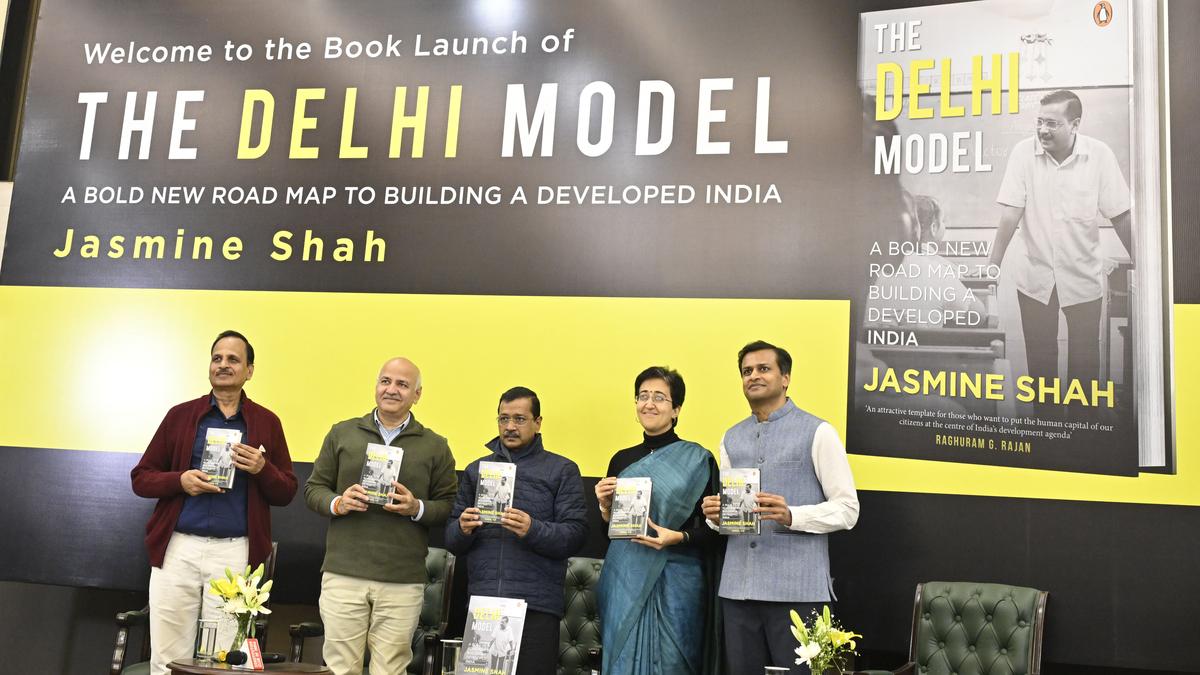AAP national convener Arvind Kejriwal, Delhi CM Atishi Singh Marlena, Former Deputy CM Manish Sisodia and AAP leader Satyender Jain launching a book titled ‘The Delhi Model’ authored by Jasmine Shah (extreme right) in New Delhi.
| Photo Credit: SHIV KUMAR PUSHPAKAR
The February 5 election will be a test of how the unique model of governance shaped by the Aam Aadmi Party (AAP) in the past decade has impacted the lives of millions of ‘Aam aadmis’ in the national capital, read a statement by Jasmine Shah, the author of recently published book, ‘The Delhi Model’.
“What sets the Delhi model apart, though, is that while substantially improving the human development indicators and quality of life of its citizens, it has delivered resilient economic performance, outperforming most States. Delhi today has the highest minimum wages in India, lowest inflation rate, lowest debt-to-GDP ratio, lowest unemployment rates, and a GSDP growth rate at par with the rest of the country,” it added.
The AAP leader added that the recent criticism of the “Delhi model” has narrowly focused on one aspect — the decline in capital expenditure (capex) from over 40% of the budget earlier to 22%. “Capex accounts for a small element of any strategy towards investing in human capital—part of the reason why traditional parties don’t find it attractive for it is much easier to take a ‘cut’ from Capex projects,” it also stated.
Robust healthcare
He added that while AAP has nearly doubled the number of classrooms in Delhi government schools in the past decade, bulk of its investment in education has gone into recruiting and training over 30,000 regular teachers. When it comes to health, he says, AAP has set up 550 mohalla clinics and increased hospital bed capacity by 45%. Most of its investment has gone into hiring frontline workers and making medicines and tests completely free of cost, which accounts for bulk of the out-of-pocket health expenditure, he said.
Another factor, he stressed, is that AAP government’s budget has seen an unprecedented rise by two-and-a-half times in the past decade, increasing by ₹5,000 crore per annum as compared to an annual increase of only ₹1,200 crore in the last term of Congress government. “As a result, even though the share of capital expenditure has reduced under AAP’s tenure, its overall quantum has nearly doubled from ₹4,200 crore in the last three years of the Congress tenure (2011-14), to ₹8,200 crore in the last three years (2021-24),” Mr. Shah said.
Combined with efficient spending, cutting down leakages and prioritising PPP models, AAP has managed to achieve a fine balance between prioritising human capital development and meeting the infrastructure needs of Delhi, Mr. Shah added.
Published – February 04, 2025 01:55 am IST
